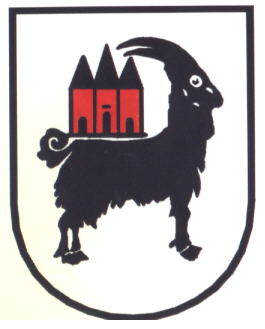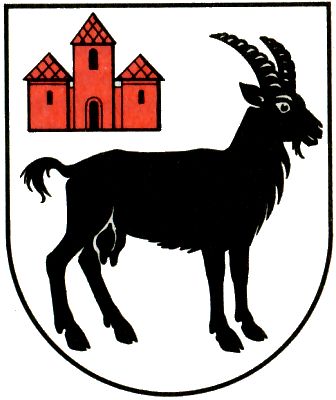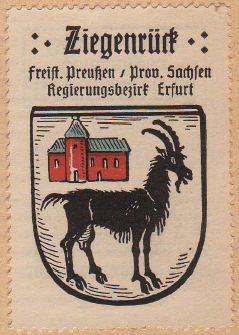Ziegenrück: Difference between revisions
Knorrepoes (talk | contribs) m (Text replace - "{|width="100%" style="color:black; background-color:#ffffcc;" |width="15%"|50 px|left |width="70%" align="center" |'''Heraldry of the World<br/>Civic heraldry of Germany - [[Deutsche Wappen|Deutsche Wappen (Gemeind) |
Knorrepoes (talk | contribs) m (Text replacement - ".jpg|center]] ====Official blazon====" to ".jpg|center|Wappen von {{PAGENAME}}]] ====Official blazon====") |
||
| Line 7: | Line 7: | ||
Verwaltungsgemeinschaft : [[Verwaltungsgemeinschaft Ranis-Ziegenrück]] | Verwaltungsgemeinschaft : [[Verwaltungsgemeinschaft Ranis-Ziegenrück]] | ||
[[File:ziegenru.jpg|center]] | [[File:ziegenru.jpg|center|Wappen von {{PAGENAME}}]] | ||
====Official blazon==== | ====Official blazon==== | ||
Revision as of 16:58, 21 January 2016
This page is part of the German heraldry portal |
Heraldry of the World |
|
German heraldry:
|
Selected collector's items from Germany:
|
ZIEGENRÜCK
State : Thüringen
District (Kreis) : Saale-Orla Kreis (until 1994 Schleiz)
Verwaltungsgemeinschaft : Verwaltungsgemeinschaft Ranis-Ziegenrück
Official blazon
In Silber eine linksgewendete schwarze Ziege, über deren Rücken schwebend ein dreitürmiges rotes Gebäude mit erhöhtem Mittelturm.
Origin/meaning
The canting goat (Ziege) with an image of a city on it's back (Rücken=back) is a canting composition, which already appeared on the seal of the city known from 1403.
The composition has remained unchanged since. The colours of the small house, however have changed during the last century. In the early 20th century Hupp showed the house red with a blue roof; whereas Bensing in 1984 showed the house completely red.
| The arms as used during DDR times |
The arms by Hupp in the Kaffee Hag albums +/- 1925 |
Contact and Support
Partners:
Your logo here ?
Contact us
© since 1995, Heraldry of the World, Ralf Hartemink 
Index of the site
Literature : Ulle, 1997; Kaffee Hag albums, 1930s; Bensing et al., 1984














